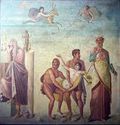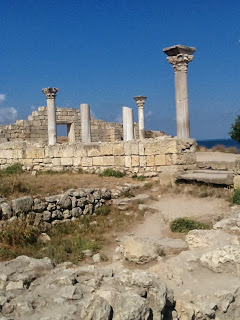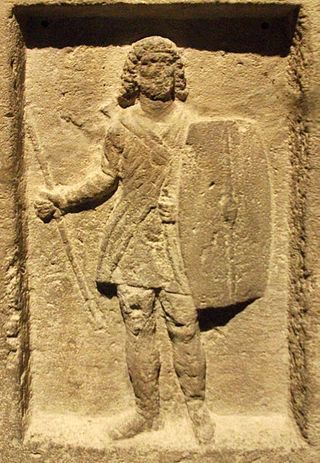Problems with the Crimea -- ancient style
No, I'm not about to contribute to the "Crimea debate". Though I must say that I wish most of the media would stop writing about Russian actions as if they were somehow the equivalent of France aggressively annexing East Anglia. Whatever the wrongs and rights here (and there are plenty of wrongs), the status of the Crimea isn't anything like as simple as that.
Throughout the 20th century Crimea was "liminal" territory, and only "given" to Ukraine in 1954 (when Ukraine was a part of the USSR anyway). The recent coverage is mostly a typical example of simplifying a complex history (and then trying to rouse popular feeling -- "a new Cold War" -- on that basis). The Washington Post has been one of the best exceptions to this. Here is a good historical piece; here a critical fact-check on some of Putin's statements, with a different emphasis; and here some comparative examples.
But -- be that as it may -- I did come to reflect this week on what was going on it the Crimea in the ancient world.
Quite a lot, is the answer.
The Black Sea area was one of the granaries of the Greek world, and various Greek cities sent out "colonies" there -- to the "Tauric Chersonesus" (chersonesus means "peninsula") as they called it. One of the best known is just on the outskirts of modern Sevastapol -- and was known simply as Chersonesus (pictured above). It has been excavated over the last 20 years by a team from the University of Texas and it's just been named a World Heritage Site.
In the Roman period, the region was almost as ambivalent as it is now. It was for centuries (from the end of the fifth century BC) part of the "independent kingdom of Bosporus", and it continued shipping grain to Greece through the Hellenistic period. Underneath this, however, there were changing power block. For a time it was under the control of the famous King Mithradates of Pontus (long term enemy of the Romans, who was eventually defeated by Pompey the Great in 63 BC); in fact, Mithradates died in one of the other towns in the Crimea, originally a Greek (Milesian) colony, Panticapaeum (modern Kerch). The tombstone of the Bosporan soldier above is from there.
For hundred of years, until the fourth century AD, the kingdom (including most of the Crimea) remained a client kingdom of Rome; that is, in a (formally) quasi-independent state, but de facto part of the Roman empire ("puppet kingdom" might be a better word). But it was always a perilous state. And in the reign of the emperor Nero there was a (Putin-style??) attempt to annex the region fully, and for a few years it was incorporated into the province of Moesia. But that turned out to be only temporary, part of some ambitious expansionist plans of the emperor.
 But if all this sounds relatively cosy, dont forget that this was the place where Agamemnon's daughter, Iphigeneia ended up -- after she had been spirited away by Artemis from the famous scene where she was due to be sacrificed (left -- to ensure a fair wind for the Greeks trying to reach the Trojan War). As Euripides dramatises it in his Iphigeneia among the Taurians (the Taurians were the inhabitants of the Chersonesos), she was effectively imprisoned, as priestess in a temple, where she presided over the ritual slaughter of visiting foreigners. (There's a good new book on this by Edith Hall.)
But if all this sounds relatively cosy, dont forget that this was the place where Agamemnon's daughter, Iphigeneia ended up -- after she had been spirited away by Artemis from the famous scene where she was due to be sacrificed (left -- to ensure a fair wind for the Greeks trying to reach the Trojan War). As Euripides dramatises it in his Iphigeneia among the Taurians (the Taurians were the inhabitants of the Chersonesos), she was effectively imprisoned, as priestess in a temple, where she presided over the ritual slaughter of visiting foreigners. (There's a good new book on this by Edith Hall.)
So from the centre of the Greco-Roman world, the Crimea could look not just like a bread basket, but a cruelly exotic place of blood and slaughter. Let's hope history doesnt repeat.
Mary Beard's Blog
- Mary Beard's profile
- 4072 followers





